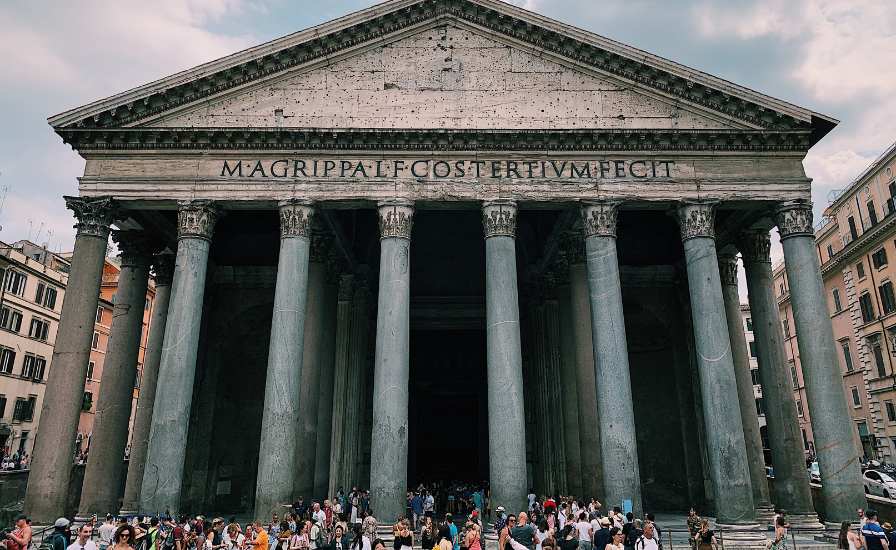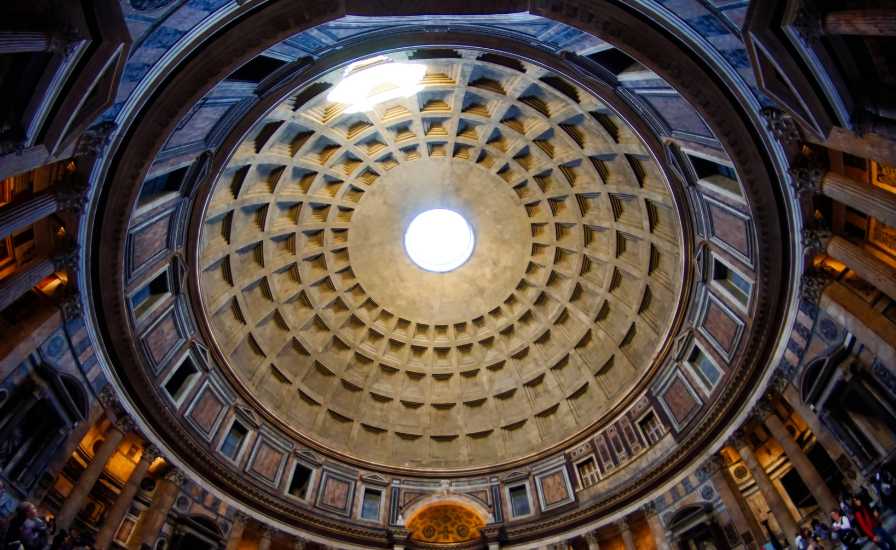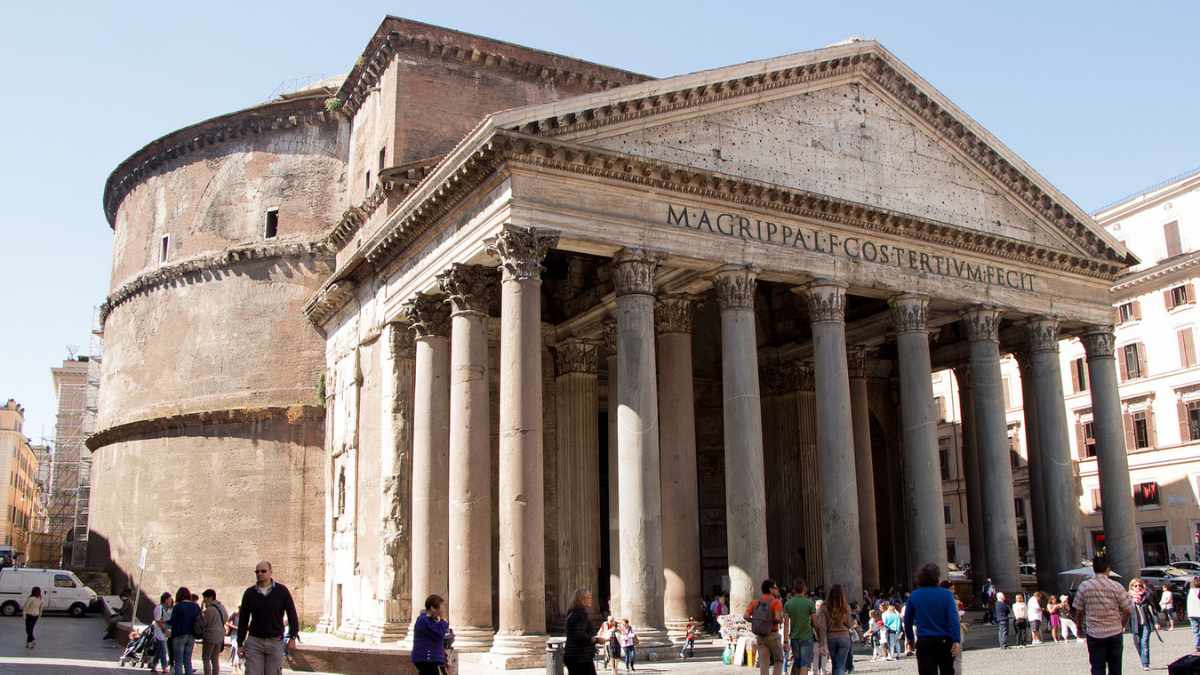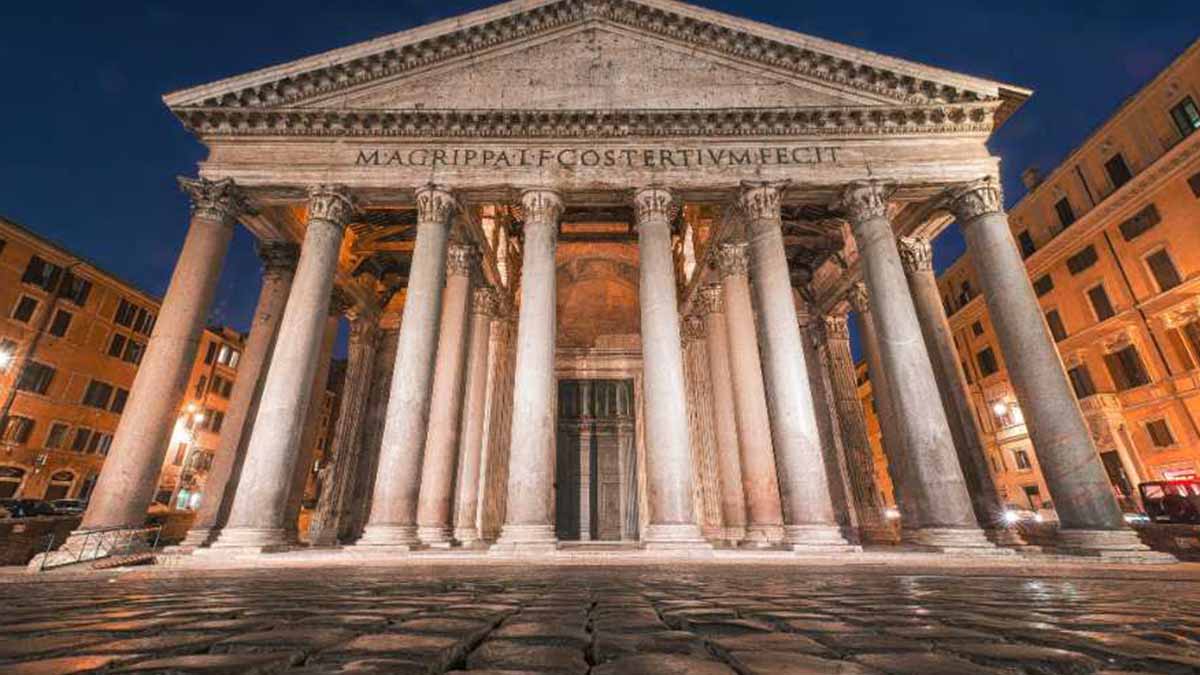Astonishing Pantheon Visit Tips
So, you've decided to visit the Rome Pantheon? Excellent choice! The Pantheon is one of Rome's most iconic and well-preserved ancient monuments. Its grandeur, history, and architectural genius has attracted millions of visitors over the centuries. But before you go, there are a few things you need to know to make your visit smooth, enjoyable, and truly unforgettable.
This guide is packed with astonishing tips that will help you navigate your Pantheon visits with ease. From securing Pantheon tickets to understanding its fascinating history, we've got you covered. Whether you're a history buff or simply a curious traveler, these tips will ensure that your Pantheon Rome visits are as enriching as possible.
The Pantheon: A Glimpse into History
Before diving into the practicalities, let's take a moment to appreciate the Rome Pantheon itself. Built around 113–125 AD during Emperor Hadrian's reign, the Pantheon was originally a temple dedicated to all the gods of ancient Rome. The word "Pantheon" itself comes from Greek, meaning "all gods."
But here's a fascinating tidbit: Despite its age, the Pantheon remains remarkably well-preserved. This is partly due to its conversion into a Christian church in 609 AD, which saved it from being pillaged or destroyed like many other Roman structures. Today, it serves as both a church and a major tourist attraction, drawing millions of visitors each year.
Why the Pantheon Stands Out
The Rome Pantheon isn't just any ancient monument; it's an architectural marvel. Its dome, still the largest unreinforced concrete dome in the world, has been the inspiration for countless buildings throughout history. As you stand beneath this incredible structure, you'll likely wonder, "How did they do this nearly 2000 years ago?"
But we'll leave the architectural admiration for later. For now, let’s focus on what you need to know before you set foot in this ancient wonder.

Securing Your Pantheon Tickets
First things first: Pantheon tickets. While the Pantheon was free to visit for many years, a small entrance fee was introduced in 2023 to help with maintenance and preservation efforts. This means you'll need to plan ahead to secure your Pantheon tickets.
How to Buy Pantheon Tickets
The easiest and most convenient way to buy Pantheon tickets is online. Several websites offer advance ticket sales, which allows you to skip the often-long lines at the entrance. Here’s a step-by-step guide:
Visit the Official Website: You can purchase your Pantheon tickets directly from the official Pantheon website or through reputable third-party vendors. Make sure to avoid dubious sites to prevent scams.
Choose Your Time Slot: When buying Pantheon tickets online, you’ll often be asked to select a time slot. This helps manage the flow of visitors and ensures a more pleasant experience. Early mornings or late afternoons are usually less crowded.
Complete Your Purchase: After selecting your time slot, proceed with the payment. You'll receive an electronic ticket via email, which you can show on your phone at the entrance.
Print Your Ticket: While most places in Rome accept electronic tickets, it’s always a good idea to print a copy just in case. Better safe than sorry!
On-the-Spot Ticket Purchases
If you're more of a spontaneous traveler and didn't buy Pantheon tickets in advance, don't worry—you can still purchase them at the entrance. However, be prepared for potentially long lines, especially during peak tourist seasons.
Insider Tip: Free Entry Days
If you're visiting Rome on a budget, take advantage of free entry days. On the first Sunday of every month, the Pantheon offers free admission to all visitors. However, be prepared for larger crowds on these days. Arriving early is key to beating the rush.
The Best Time for Pantheon Visits
Timing your Pantheon visits is crucial to ensuring a pleasant experience. The Pantheon is open every day from 9:00 AM to 7:00 PM, with the last entry at 6:45 PM. But not all hours are created equal.
Early Mornings: The Calm Before the Storm
If you want to experience the Pantheon Rome in a more serene atmosphere, aim to visit as soon as it opens. Early mornings are generally less crowded, allowing you to take in the magnificence of the place without too many distractions.
Late Afternoons: A Softer Light
Another great time for Pantheon visits is late afternoon, especially during the golden hour. The soft light streaming through the oculus at the top of the dome creates a magical atmosphere inside the Pantheon. Plus, the crowds usually thin out towards the evening.
Avoid Peak Hours
As a popular tourist attraction, the Rome Pantheon can get extremely crowded, particularly between 11:00 AM and 3:00 PM. If you’re not a fan of large crowds, it’s best to avoid these peak hours.
Dress Code: Respecting the Sacred Space
While the Pantheon Rome is a major tourist site, it’s important to remember that it also functions as a church. As such, visitors are expected to dress modestly. Here are a few guidelines to keep in mind:
Cover Your Shoulders and Knees: Both men and women should ensure that their shoulders and knees are covered. If you’re visiting during the warmer months, carrying a shawl or scarf to drape over your shoulders is a good idea.
No Hats Inside: It’s customary to remove hats when inside the Pantheon, as a sign of respect.
Footwear: Comfortable shoes are a must, especially if you plan to explore more of Rome after your Pantheon visit.
By adhering to these simple guidelines, you’ll show respect for the sacred space while also ensuring a smooth entry.
What to Expect Inside the Pantheon
Now that you’ve secured your Pantheon tickets and timed your visit perfectly, what can you expect inside? The Rome Pantheon is a treasure trove of history, art, and architecture. Here’s what you shouldn’t miss:
The Dome: A Marvel of Ancient Engineering

Suffice it to say that the dome is without any doubt the centerpiece of the architectural extravaganza. Spanning 43 meters in diameter, it remained the largest to be constructed for a long time until the renaissance period. Even more gratifying is the fact that it has retained its status as the world’s biggest un-reinforced concrete dome.
Located at the center of the dome is the oculus; it is an opening measuring 9 meters across, through which natural light is admitted. The natural light makes a certain impact on the interior depending on the time of day which is quite mystical and contributes to the overall impression of the Pantheon. It also has a function of natural ventilation; hot air is released while fresh air is allowed to enter the building through this site.
The Tombs of the Famous
The Pantheon Rome is not just an architectural wonder; it’s also the final resting place of several notable figures. Most famously, it houses the tomb of the artist Raphael, one of the Renaissance's greatest painters. His tomb is marked by an inscription that reads: “Here lies Raphael, by whom Nature feared to be outdone while he lived, and when he died, feared that she herself would die.”
In addition to Raphael, the Pantheon is also the burial site for several Italian kings, including Victor Emmanuel II and Umberto I. Their tombs add an extra layer of historical significance to the site.
The Interior Design
The interior of the Pantheon is a stunning example of Roman architectural ingenuity. The floor is laid out in a geometric pattern of circles and squares, which was designed to mirror the shape of the dome above. The walls are adorned with statues, columns, and intricate carvings, each telling a story of Rome’s glorious past.
One detail that often goes unnoticed by visitors is the drain holes in the floor. Since the oculus is open to the elements, rainwater can enter the Pantheon. These drains are ingeniously designed to manage the water, preventing flooding inside the building.
Essential Tips for Your Pantheon Visit
Now that you have a good grasp of what to expect, here are some additional tips to make your Pantheon Rome visit as smooth as possible:
1. Beat the Crowds with a Guided Tour
If you want to get the most out of your visit, consider joining a guided tour. Not only will you skip the long lines, but you'll also gain in-depth insights from a knowledgeable guide. Many tours include a visit to nearby attractions, making it a convenient way to explore more of Rome.
2. Photography Tips
The Pantheon is incredibly photogenic, but capturing its grandeur can be challenging. If you’re into photography, try visiting during the golden hour when the light is softer. A wide-angle lens will help you capture the dome in all its glory. Just remember to be respectful of other visitors and the sacred nature of the space.
3. Nearby Attractions
The Rome Pantheon is located in the heart of the city, making it easy to combine your visit with other nearby attractions. Just a short walk away, you'll find the Piazza Navona, the Trevi Fountain, and the Spanish Steps. Consider planning a walking tour to cover these iconic sites.
4. Stay Hydrated
Rome can get quite hot, especially during the summer months. Be sure to carry a water bottle with you, and take advantage of the many public fountains around the city to refill. Staying hydrated will make your Pantheon visits much more enjoyable.
5. Plan for Accessibility
The Pantheon Rome is accessible to visitors with mobility issues, with ramps available at the entrance. However, the cobblestone streets around the Pantheon can be challenging for those with limited mobility. If you have accessibility needs, consider arranging for a tour that can accommodate you.
The Pantheon at Night: A Different Perspective
If you have the time, consider revisiting the Pantheon at night. While the interior isn’t open, the exterior is beautifully illuminated, offering a completely different perspective. The crowds are usually much thinner, making it a peaceful time to reflect on the day's experiences.
Why You Should Visit Twice
Visiting the Pantheon Rome both during the day and at night allows you to appreciate its beauty from different angles. The atmosphere changes dramatically, and the play of light on the ancient stones can be mesmerizing. Plus, a second visit gives you a chance to notice details you might have missed the first time around.
Interesting Facts About the Pantheon

The Rome Pantheon is full of intriguing facts and mysteries that make it even more fascinating. Here are a few tidbits that might surprise you:
1. The Pantheon’s Original Purpose Is Still Debated
While the Pantheon was initially built as a temple for all the gods, some historians believe it may have also served other purposes. Some suggest it was an astronomical observatory or a place for the emperor to make public appearances. The building’s perfect proportions and alignment with the sun support these theories, but no one knows for sure.
2. The Dome Was Once Covered in Bronze
The Pantheon’s dome was originally covered in gilded bronze, which would have made it even more impressive. However, in the 17th century, Pope Urban VIII ordered the bronze to be removed and melted down to make cannons for Castel Sant'Angelo and the Baldacchino canopy in St. Peter's Basilica. The loss of this original feature has been a point of controversy among historians and art lovers alike.
3. The Pantheon Inspired the Design of the U.S. Capitol
The Rome Pantheon has inspired architects around the world, and one of the most notable examples is the U.S. Capitol building in Washington, D.C. The Capitol’s rotunda, with its large dome and oculus, is a direct nod to the Pantheon’s design, showcasing the timeless influence of Roman architecture.
4. The Pantheon’s Oculus Serves Multiple Purposes
The oculus at the top of the Pantheon’s dome isn’t just a source of light; it also symbolizes the connection between the heavens and the earth. Additionally, it serves a practical purpose by reducing the weight of the dome and providing ventilation. During rainstorms, the water that enters through the oculus drains through the cleverly designed floor system.
Nearby Cafés and Restaurants: Where to Eat After Your Visit
After immersing yourself in the history of the Rome Pantheon, you might want to relax and enjoy a meal or a coffee. Luckily, the Pantheon is surrounded by some great places to eat. Here are a few recommendations:
1. Tazza D’Oro
Just a stone’s throw from the Pantheon, Tazza D’Oro is one of Rome’s most famous coffee shops. It’s the perfect spot to grab a quick espresso or a refreshing granita al caffè (coffee granita) after your Pantheon Rome visit. The café’s rich history and delicious coffee make it a must-visit.
2. Ristorante Armando al Pantheon
For a more substantial meal, head to Ristorante Armando al Pantheon. This family-run trattoria has been serving traditional Roman cuisine since 1961. It’s famous for its hearty dishes like cacio e pepe and saltimbocca alla Romana. The warm, cozy atmosphere makes it a great place to unwind after exploring the Pantheon.
3. Antico Forno Roscioli
If you’re in the mood for something quick and delicious, Antico Forno Roscioli is the place to go. This historic bakery offers a variety of freshly baked breads, pizzas, and pastries. Grab a slice of their famous pizza bianca and enjoy it as you stroll through the nearby streets.
Special Events at the Pantheon: A Unique Experience
The Rome Pantheon isn’t just a place to visit—it’s also a venue for special events that offer a unique way to experience this ancient site. Here are a few events you might consider:
1. The Pentecost Rose Petal Ceremony
One of the most enchanting events at the Pantheon is the Pentecost Rose Petal Ceremony, held every year on Pentecost Sunday. During the ceremony, thousands of red rose petals are dropped through the oculus, symbolizing the descent of the Holy Spirit. The petals create a breathtaking visual spectacle as they float down, filling the air with a sense of wonder and awe. If you happen to be in Rome during Pentecost, this event is not to be missed.
2. Classical Music Concerts
The Pantheon occasionally hosts classical music concerts, providing a rare opportunity to enjoy live music in one of the world’s most iconic buildings. The acoustics of the Pantheon’s dome make for an extraordinary listening experience. Keep an eye on local event listings or the Pantheon’s official website for upcoming concerts.
Final Thoughts: Make the Most of Your Pantheon Visit
The Rome Pantheon is more than just a historical monument; it’s a testament to the ingenuity and creativity of the ancient Romans. Whether you’re there for the architecture, the history, or simply to cross it off your bucket list, your Pantheon Rome visit will surely be a highlight of your trip.
Remember to secure your Pantheon tickets in advance, plan your visit during off-peak hours, and dress respectfully. With these tips in mind, you’re all set for an unforgettable experience.
Enjoy your time in Rome, and may your Pantheon visit be filled with wonder and awe. Safe travels!

Vox City, The Vox Group's Dedicated Business-To-Consumer Arm For The Past Five Years, Is Staffed By Veteran Travel Industry Experts With A Combined 21 Years Of Expertise In The Tourism Industry. Let's Explore The Beauty Of Travel In Your Own Way At Your Own Pace.
Vox City International 63 Holly Walk | CV32 4JG Leamington Spa
2025 Vox City, All rights reserved.





